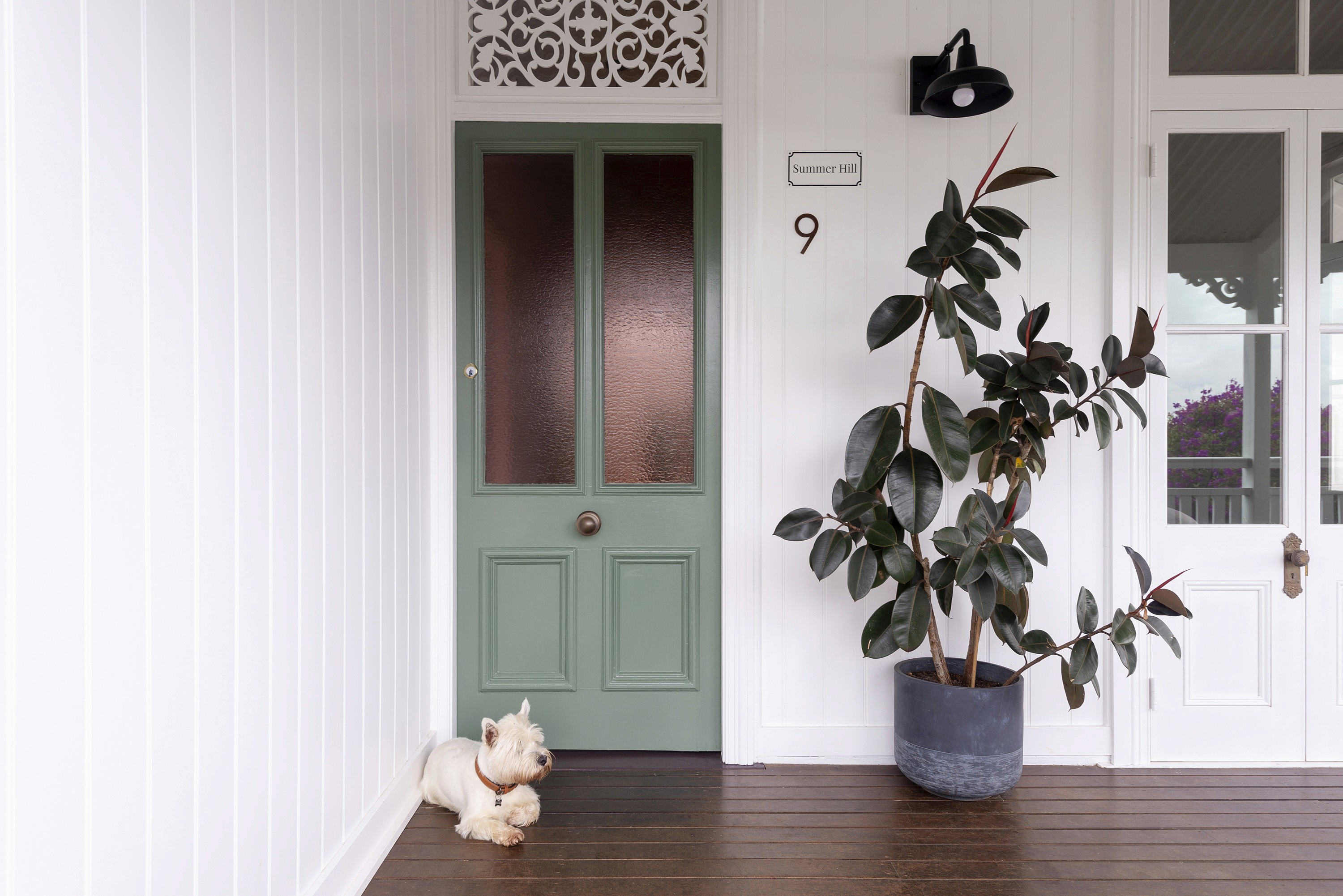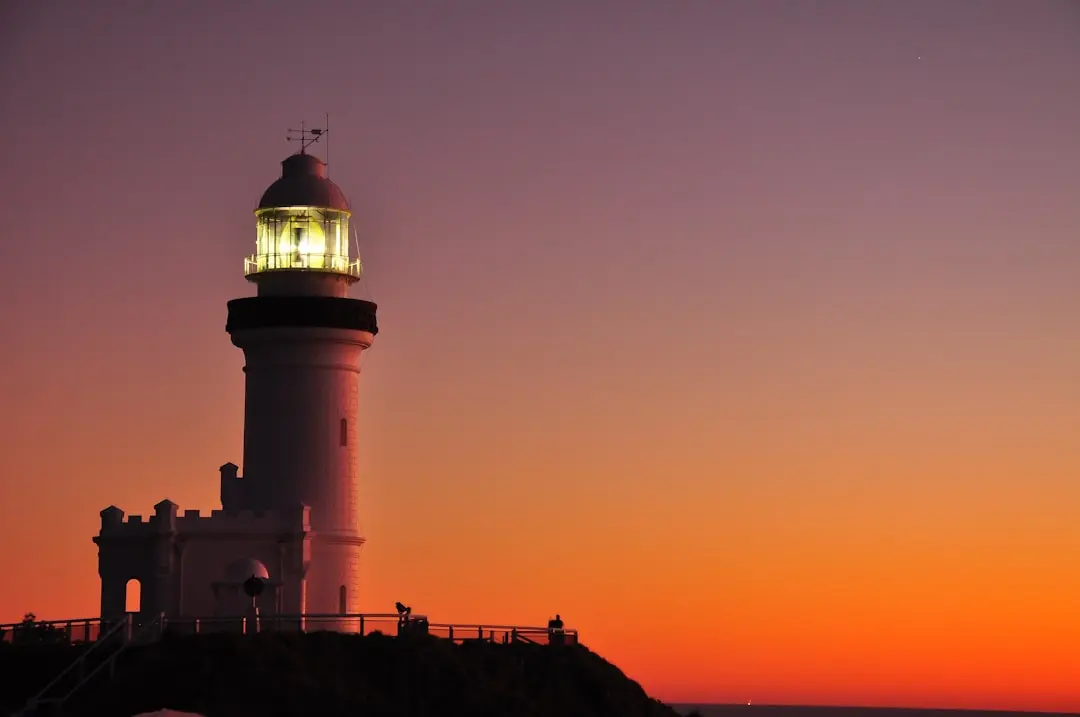Aesthetic Material Features of a Queenslander Home in Byron Bay
Nicolas Lenders
August 14, 2024
Aesthetic material features of a Queenslander home
Queenslander homes have a unique aesthetic that reflects the tropical climate and colonial history of Queensland, Australia. They are characterised by their raised design, often featuring a wrap-around verandah, allowing for better airflow and protection from the sun and rain.
In this article, we’ll look at the various aesthetic material features of a Queenslander home, so you can appreciate and understand the thought process behind these beautiful homes.
So, what are the common features of a Queenslander home?
Let's check them out
7 Key Features of a Queenslander Home
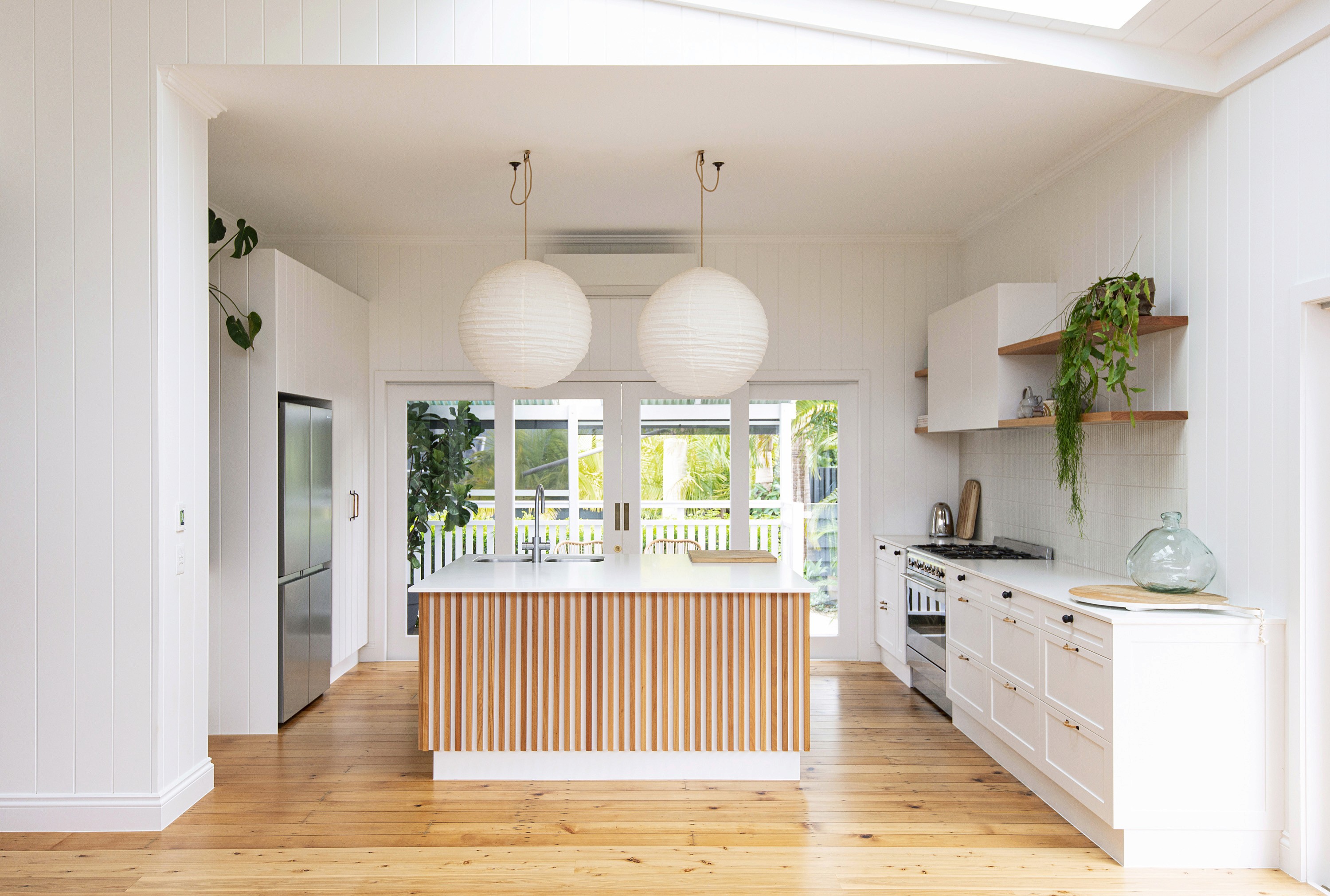
Above: Our 100 Year Old Queenslander project. Photo: Nat McComas
Queenslander homes, also known as Queenslanders, are a popular architectural style in Australia, especially in the northern state of Queensland. These homes are designed to maximise natural ventilation and create comfortable living spaces in the subtropical climate.
Let’s start with getting things off the ground
1. Raised Design
Queenslander homes are usually built on stumps or piers, which elevate the main living areas above the ground. This raised design has several benefits:
Improved airflow to keep the home cool
Protection from floods and termites
Aesthetic appeal
2. Verandahs
A typical Queenslander home has a large, wrap-around verandah that provides additional living space and a connection to the outdoors. Verandahs often feature decorative timber balustrades and provide shade and protection from the elements.
The verandah is a key social space in a Queenslander home, where families can gather, and enjoy the tropical climate and views of the surrounding landscape.
3. Timber Construction
You'll find timber used extensively throughout the home, including:
Timber weatherboards or cladding for the external walls
Timber floorboards
Timber framing
Timber is a popular choice for its aesthetic appeal, natural warmth, and ability to facilitate airflow. It’s also a sustainable material, especially in a region with abundant native timber species.
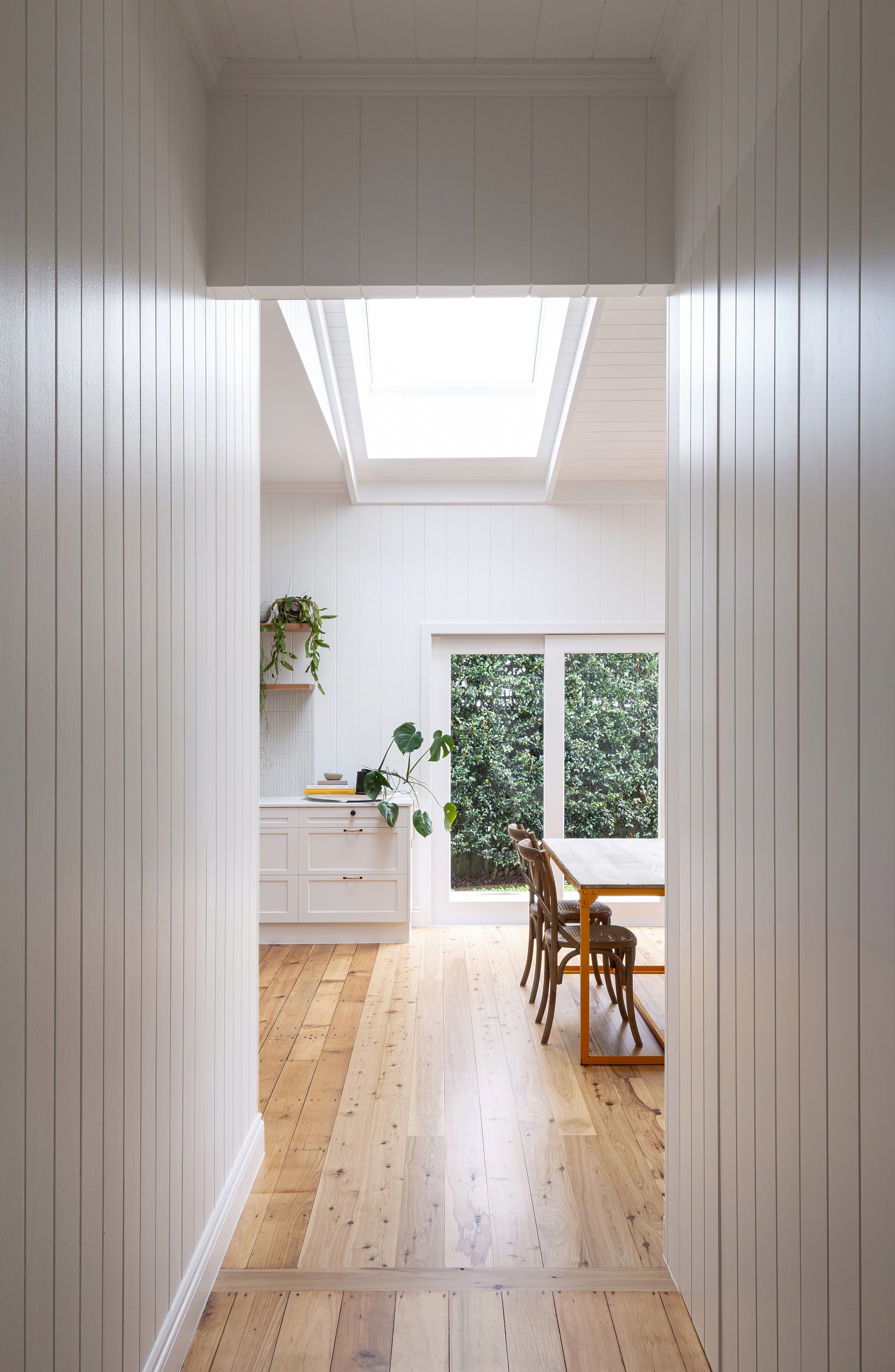
Above: Our 100 Year Old Queenslander project. Photo: Nat McComas
4. High Ceilings
Queenslander homes are known for their high ceilings, which help to dissipate heat and promote air circulation. These high ceilings also create a sense of spaciousness and allow for the installation of ceiling fans or decorative ceiling roses.
5. Timber Sash Windows
Looking around a Queenslander, you're bound to see sash windows. These windows are hinged at the top and can be opened at the bottom, allowing hot air to escape while drawing in cooler air from outside.
The design of these windows is well-suited to the tropical climate and is an important element of the home’s natural ventilation system.
6. Decorative Features
Decorative features that add character and charm to the architecture of your typical Quennslander. These features include:
Ornate timber fretwork: Intricate, lacy patterns in the timber work, often seen on verandahs and under the eaves.
Decorative gable brackets: Brackets that support the gables and add visual interest to the roofline.
Stained glass windows: Often used in entryways or as decorative elements in verandah balustrades.
Leadlight windows: Windows with small panes of coloured or textured glass held together by lead strips.
These decorative features are a hallmark of Queenslander homes and are often meticulously maintained or restored to preserve the home’s historical and architectural significance.
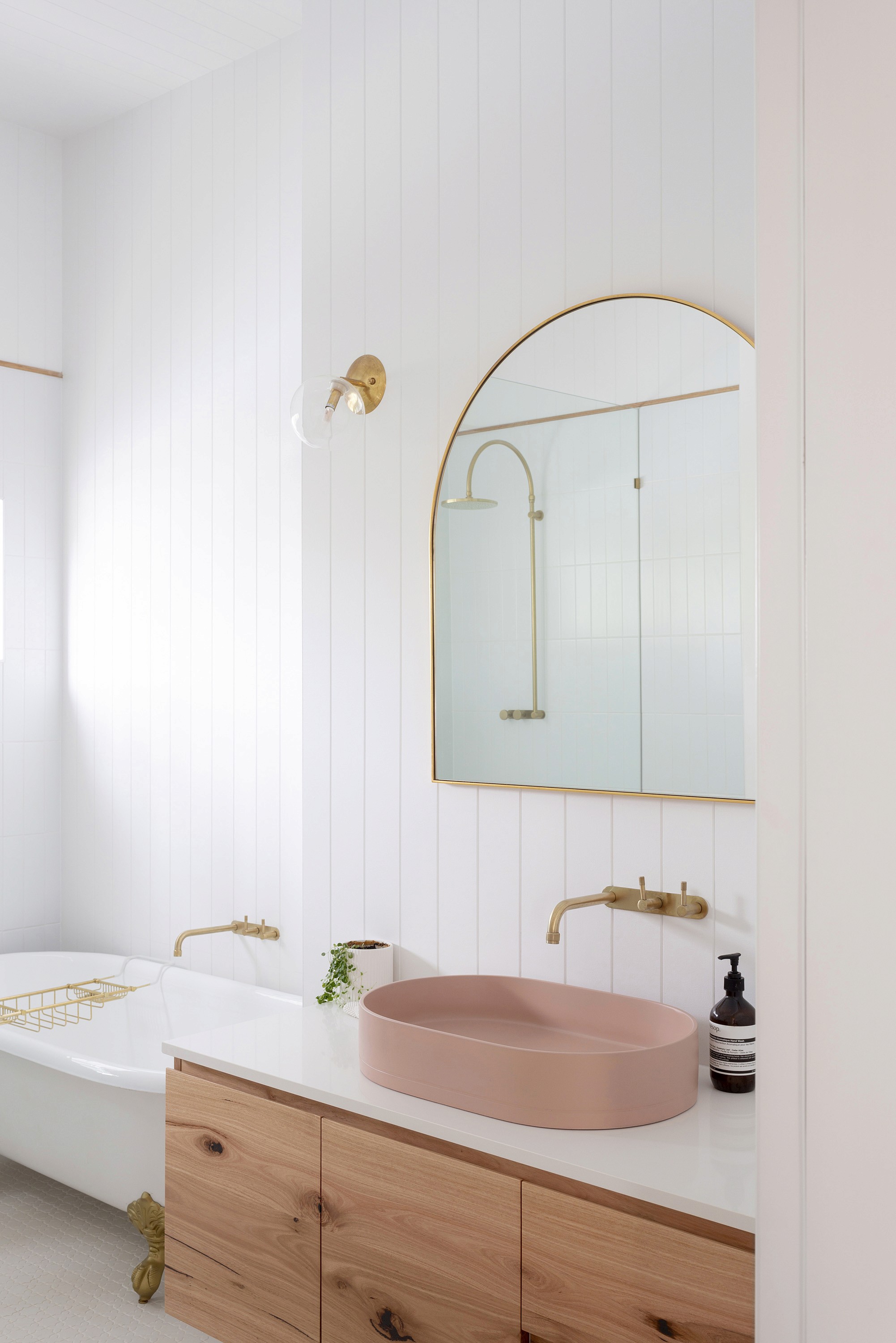
Above: Our 100 Year Old Queenslander project. Photo: Nat McComas
7. Roofing
You're also bound to see a gabled roof, which is a triangular roof with two sloping sides. This style of roof is not only aesthetically pleasing but also helps to:
Shed rainwater effectively
Provide a large, open attic space for additional storage or living area
Create a visually appealing silhouette
In terms of roofing, these homes have corrugated metal roofing, which is durable and well-suited to the tropical climate. It is also common to see a combination of metal and timber for roofing and decorative elements.
Overall Queenslander homes are known for their distinctive style and charm. From the verandahs that wrap around the house, providing a place to relax and enjoy the outdoors, to the decorative features that add character to the architecture, these homes are both visually appealing and well-suited to the Queensland climate.
So, what are the materials and finishes that make up a Queenslander home?
Let’s take a look!
Materials and Finishes Used in a Queenslander Home
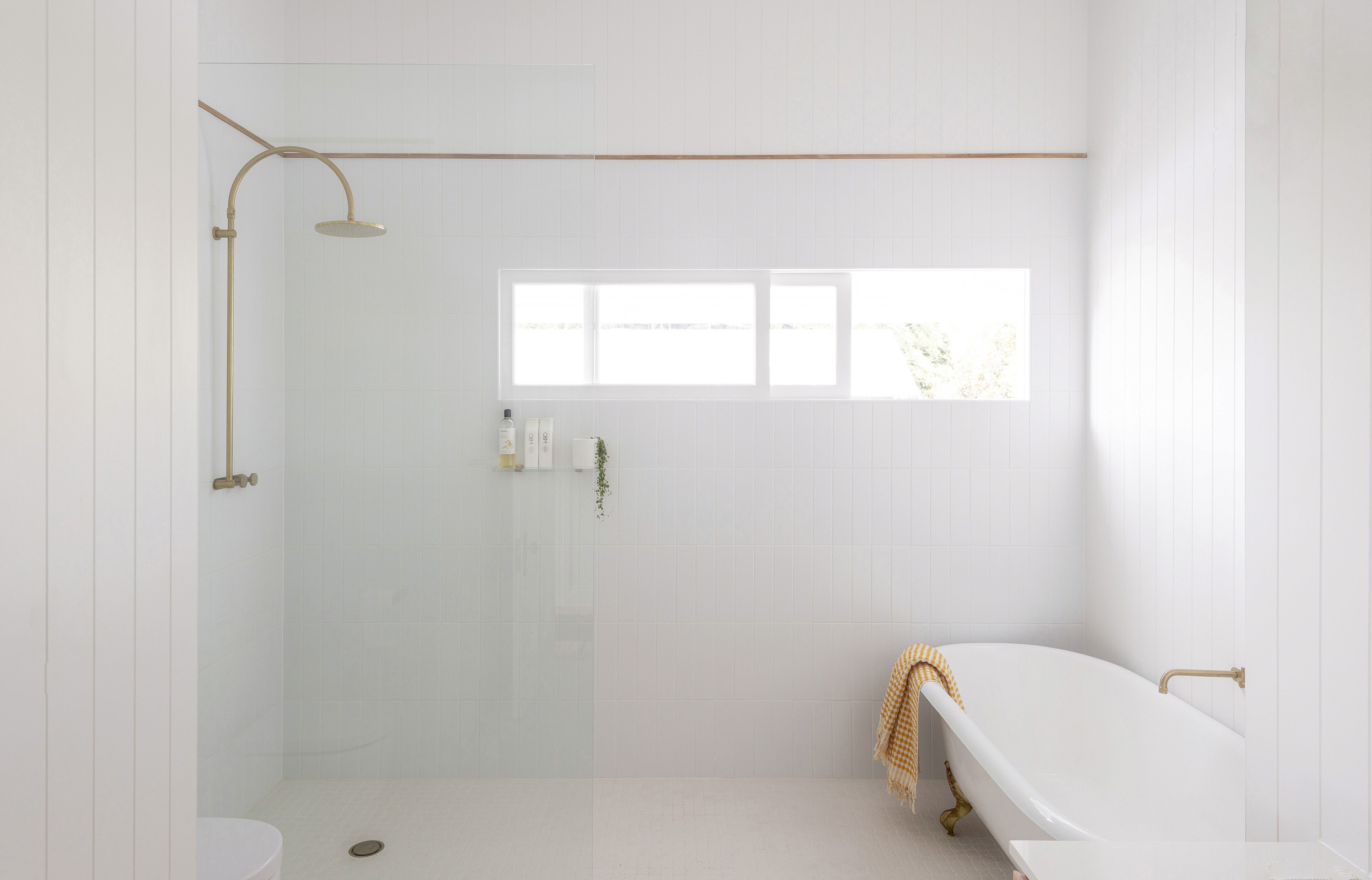
Above: Our 100 Year Old Queenslander project. Photo: Nat McComas
Queenslander homes are known for their elegance and charm, with a focus on natural materials and traditional craftsmanship. The materials and finishes used in these homes are carefully chosen to create a harmonious and timeless aesthetic.
In this section, we’ll explore the key materials and finishes that contribute to the iconic Queenslander style.
These include:
Timber
Iron
Fretwork
Stained Glass
Leadlight
Tin Roofs
Concrete
Tiles
1. Timber
Timber is the primary material used in Queenslander homes and is often sourced locally. It is used for the structure, cladding, and decorative elements of the home.
Common timber species used in Queenslanders include:
Queensland maple
Hoop pine
Red cedar
Silky oak
Blackbutt
Spotted gum
Timber adds warmth and natural beauty to the home and is often left unpainted to showcase its unique grain and color.
2. Iron
Iron is a durable and practical material that is commonly used in Queenslander homes. It is used for roofing, verandah posts, and balustrades.
Corrugated iron is a popular choice for roofing, as it is lightweight, easy to install, and provides excellent protection from the elements.
3. Fretwork
Fretwork is an intricate form of timber decoration that is commonly found in Queenslander homes. It is used to create ornate patterns and designs on verandahs, eaves, and gables.
Fretwork not only adds visual interest to the home but also provides shade and ventilation. The patterns are often inspired by nature, with motifs of flowers, leaves, and vines.
4. Stained Glass
Stained glass is a colourful and decorative form of glass that is often used in Queenslander homes. It is commonly found in entryways, windows, and doors.
Stained glass is crafted by assembling small pieces of coloured glass together using lead strips. It adds a touch of elegance and sophistication to the home and allows natural light to filter through in a beautiful and unique way.
5. Leadlight
Leadlight is a type of decorative glasswork that is similar to stained glass but is made with clear or textured glass. It is used to create intricate patterns and designs in windows, doors, and skylights.
It's a versatile material that can be customized to match the architectural style of the home. It is often found in a variety of shapes, such as diamonds, circles, and ovals, and can be used to create both traditional and contemporary designs.
6. Tin Roofs
Tin is a popular choice for roofing in Queenslander homes, as it is lightweight, durable, and provides excellent protection from the elements.
Tin roofs are typically corrugated and are available in a range of colours, allowing homeowners to choose a shade that complements the overall aesthetic of the home.
7. Concrete
Concrete is a versatile and durable material that is commonly used in modern Queenslanders for foundations, driveways, and paths.
Incorporating concrete into the design of a Queenslander can provide a contemporary edge while maintaining the traditional aesthetic.
8. Tiles
Tiles are often used in Queenslander homes for flooring, bathrooms, and kitchens. They are a practical and low-maintenance choice, and come in a wide variety of colours, patterns, and sizes.
Tiles can be used to add a pop of colour, create visual interest, or enhance the overall design of the home.
Overall Queenslander homes are characterised by their traditional materials and finishes, which contribute to their timeless appeal. From the natural warmth of timber to the vibrant colours of stained glass, these materials are carefully chosen to create homes that are both beautiful and functional.
How to Renovate a Queenslander Home While Maintaining its Classic Charm
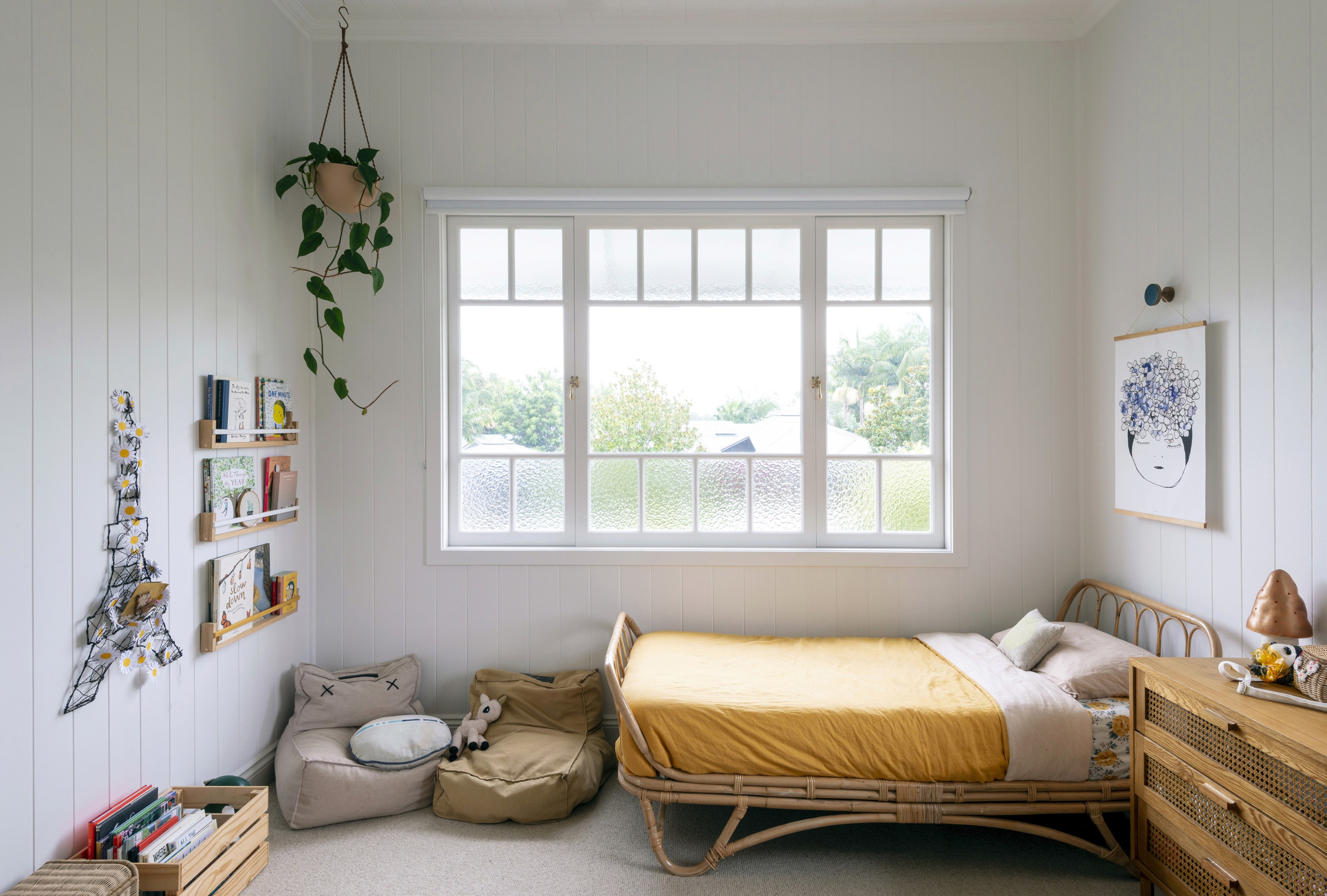
Above: Our 100 Year Old Queenslander project. Photo: Nat McComas
If you’re lucky enough to own a Queenslander , you’ll want to maintain its classic charm while updating it for modern living.
In this section, we’ll discuss how to do just that. We’ll cover the following:
The importance of preserving key features
Upgrading for modern living
Selecting the right materials
1. The Importance of Preserving Key Features
Queenslander homes have a distinct aesthetic that is a product of their unique design and historical context. The most important part of maintaining the classic charm of your home is preserving its key features.
These features include:
Verandahs: Queenslander homes are known for their wide, wrap-around verandahs that provide shade and capture cooling breezes. Preserving and enhancing these verandahs is essential to maintaining the home’s character.
Timber details: Ornate timber fretwork, decorative gable brackets, and VJ wall panelling are all common in Queenslanders. These timber details are a key part of the home’s charm and should be carefully maintained or restored.
High ceilings: Queenslanders often have high ceilings to aid in ventilation and create a sense of spaciousness. Maintaining these high ceilings is important for preserving the home’s overall feel.
Stained glass: Many feature stained glass windows or leadlight details, which add a touch of elegance and coloru. These should be preserved or, if necessary, restored to maintain their beauty.
2. Upgrading for Modern Living
While preserving key features is important, it’s also essential to upgrade your Queenslander for modern living. This can be done in a way that respects the home’s historical character.
Here are some ways to upgrade while maintaining the classic charm:
Air conditioning: While the original design was focused on natural ventilation, modern air conditioning can be discreetly installed to provide comfort during extreme heatwaves.
Modern kitchens and bathrooms: It’s possible to update your kitchen and bathroom while respecting the home’s heritage. Look for modern appliances and fixtures that have a traditional feel.
Efficient lighting: Modern lighting can be more energy-efficient while still respecting the home’s historical aesthetic. Consider LED lighting that mimics the warmth of traditional incandescent bulbs.
Insulation: Upgrading your home with modern insulation can significantly improve its energy efficiency without compromising its appearance.
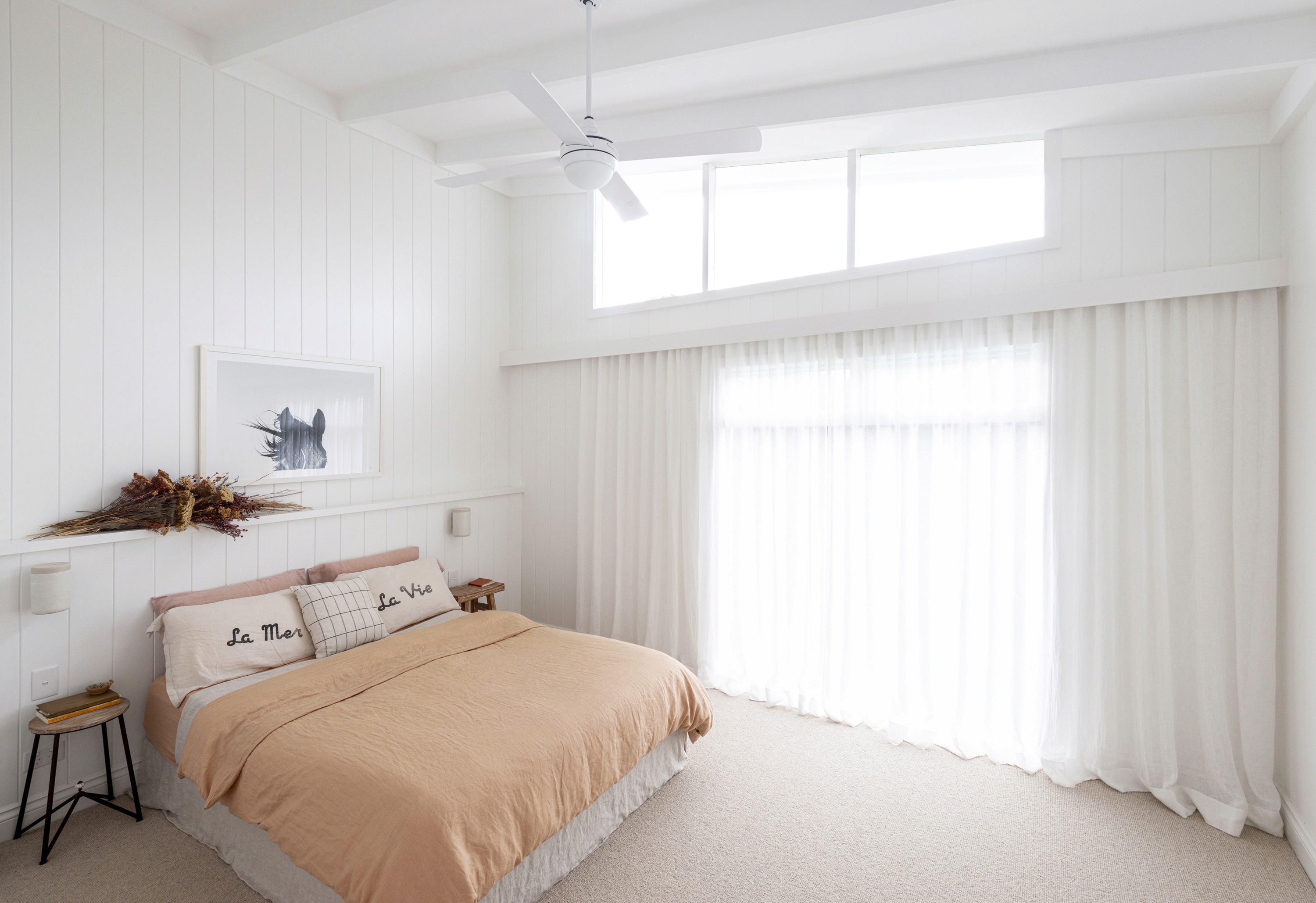
Above: Our 100 Year Old Queenslander project. Photo: Nat McComas
3. Selecting the Right Materials
Choosing the right materials is crucial when renovating a Queenslander home. It’s important to select materials that are in line with the home’s historical context and can withstand the Queensland climate.
Here are some tips for selecting materials:
Timber: Use local timber species for any repairs or replacements to maintain the home’s historical accuracy. These may include hoop pine, red cedar, or blackbutt.
Roofing: If you need to replace the roof, consider using modern materials that mimic the appearance of traditional corrugated iron. These materials can provide better insulation and longevity.
Paint: Choose paint colours that are historically accurate or in keeping with the home’s traditional color palette. It’s essential to prepare the surface properly to ensure the paint adheres well and lasts.
Flooring: If you need to replace flooring, consider timber floorboards or traditional VJ wall panelling to maintain the home’s aesthetic.
Windows: When replacing or restoring windows, look for options that match the original design. Timber sash windows are common in Queenslanders and can be made more energy-efficient with the addition of draught seals and glazing.
With careful planning and consideration, it’s possible to renovate a Queenslander home while maintaining its classic charm. By preserving key features, upgrading for modern living, and selecting the right materials, you can create a home that is both timeless and comfortable.
If you’re considering renovating or building your dream Queenslander home, please get in contact.
Wrap Up
We are sure you'll agree thatQueenslander homes are truly a thing of beauty. These homes are not just built to withstand the harsh climate of Queensland, but to thrive in it (and Byron Bay of course).
Their iconic design, with the raised timber structure, large verandahs, and intricate details, is a testament to the ingenuity of Australian architecture.
So whether you are lucky enough to live in a Queenslander, or simply admire them from afar, there is no denying the timeless appeal of these beautiful homes.
